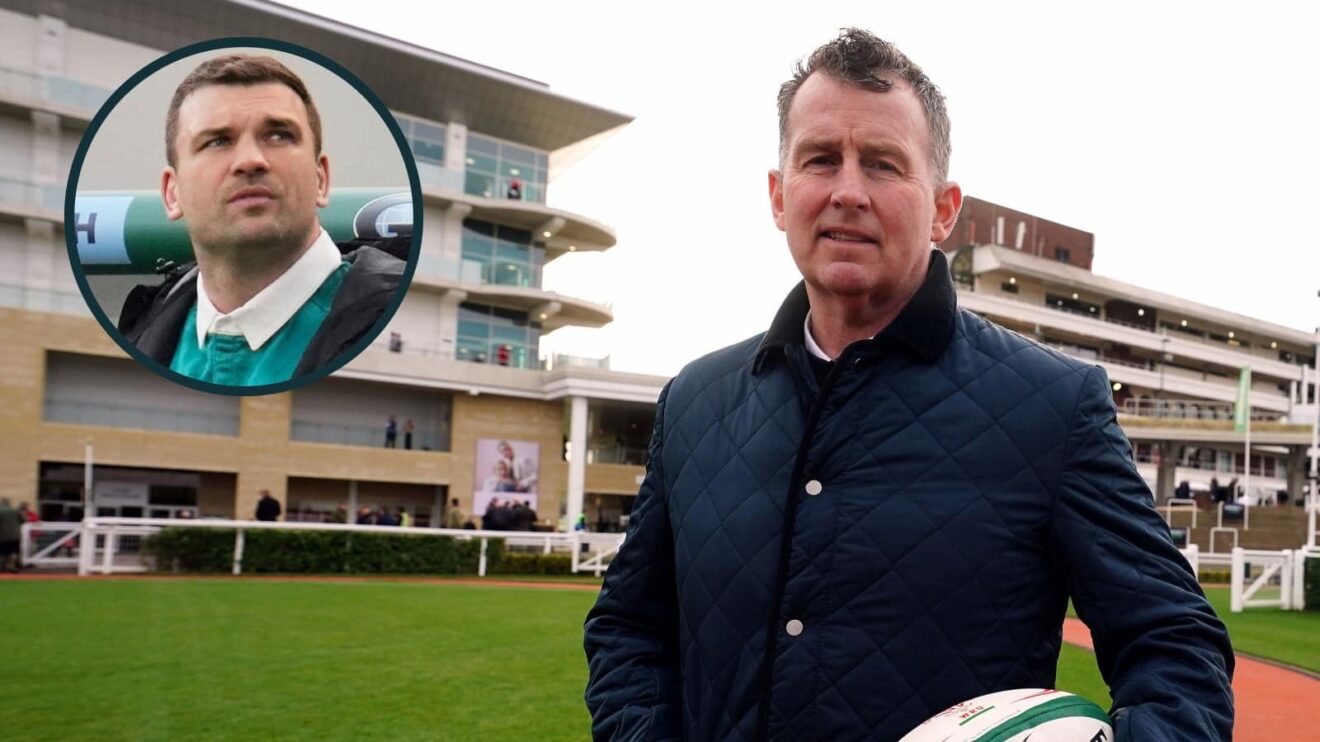Why World Rugby prevented Nigel Owens from speaking about Tadhg Beirne incident

Former Test referee Nigel Owens and Ireland lock Tadhg Beirne after being sent-off.
Former Test referee Nigel Owens has stated that World Rugby did not want to “interfere” in the independent disciplinary process by commenting on Tadhg Beirne’s red card.
The Ireland lock was initially sin-binned for making contact with the head of Beauden Barrett before that was upgraded to a 20-minute red by the Foul Play Review Officer.
It was then rescinded when it was heard by an independent disciplinary panel, with Beirne now free to play against Japan, Australia and South Africa.
On World Rugby’s show Whistle Watch, Owens goes through all the big refereeing decisions, but he did not discuss the most debated incident.
“Because there is a disciplinary process going ahead, we then don’t comment so that we don’t interfere in that process, to be fair to everybody involved,” he explained in regards to the Beirne red.
Owens has previously stated that an episode is recorded on a Tuesday – in this case prior to the outcome of Beirne’s hearing being revealed – before being uploaded to YouTube on either Wednesday or Thursday.
However, it would suggest that there has been a change of mind or protocol from World Rugby with the Welshman previously discussing the red cards to Romain Ntamack and Garry Ringrose in the Six Nations – before the respective hearings had been concluded.
Caleb Clarke high tackle
The former Test ref was happy to explain other incidents, though, and revealed that the All Blacks were fortunate to escape a sin-binning in the first half following Caleb Clarke’s hit on Tommy O’Brien.
Scott Robertson gives World Rugby ‘important feedback’ after Ireland v All Blacks issue
“Caleb Clarke has got a clear line of sight, so when you talk about mitigation and things changing dynamics last second, that can alter the outcome of the decision or whether there was foul play or not,” he said.
“Caleb Clarke has got a clear line of sight which means he can see exactly what is happening and because of that, he has then got time to adjust and avoid the final outcome of hitting the head.
“Do we have foul play? Yes we do, we have head contact. They will look at the degree of danger, which probably isn’t as high as a shoulder to the head. It can be but in this instance it’s deemed not to be a high degree of danger.
“But because of the clear line of sight, because of the actions, what that should have been was a yellow card.
“I’m not saying it reaches a threshold of a yellow card to go to the bunker to decide whether it’s a red or not, but this certainly should have been a yellow card.”
He added: “Even though there was a dip by the Irish player, the fact he was already doing this and had a clear line of sight, that then was not enough to mitigate it down from what should be a yellow card to a penalty.
“The decision should have been a yellow card.”